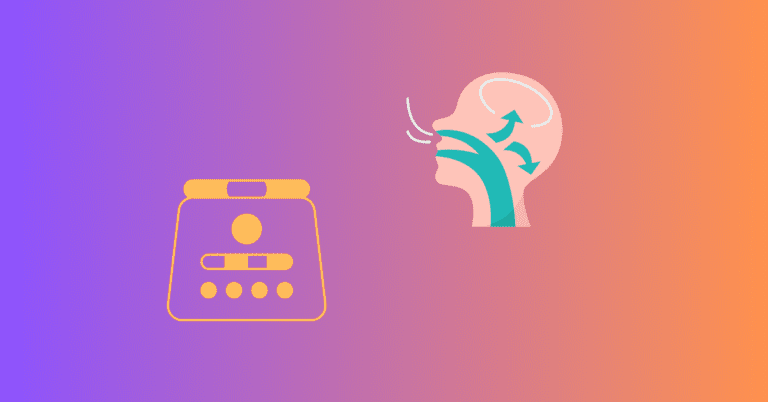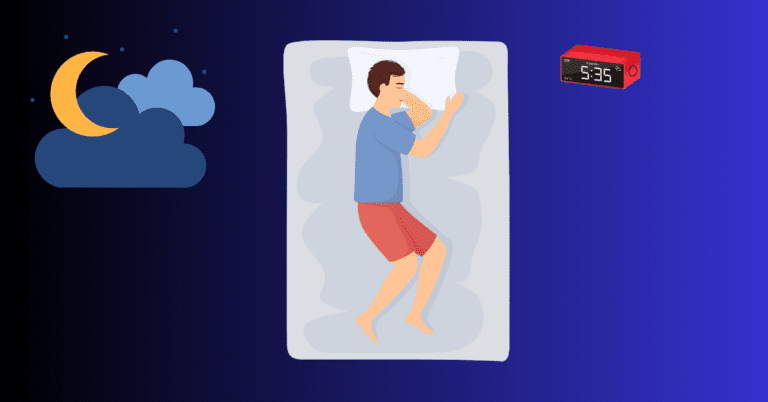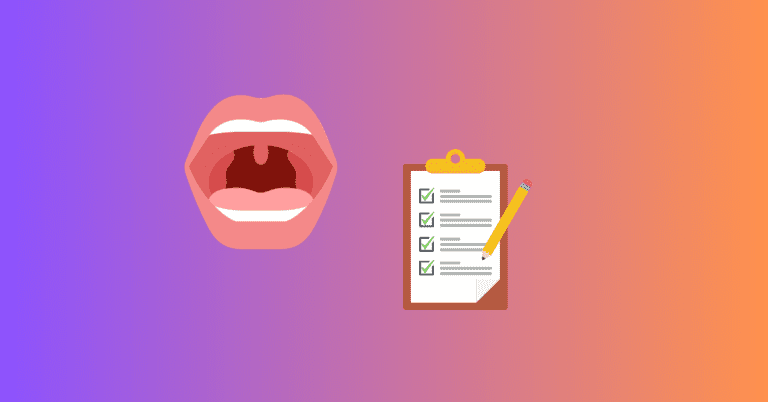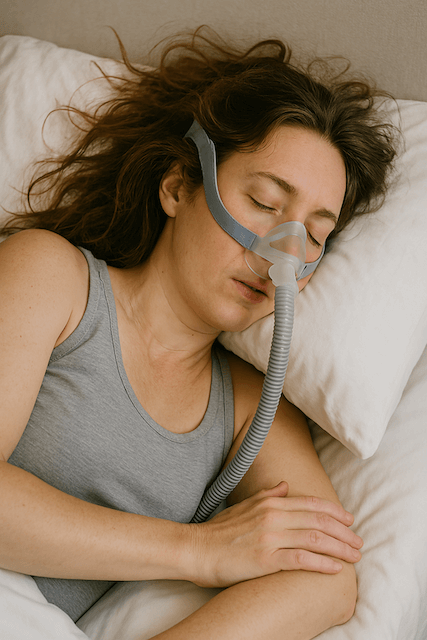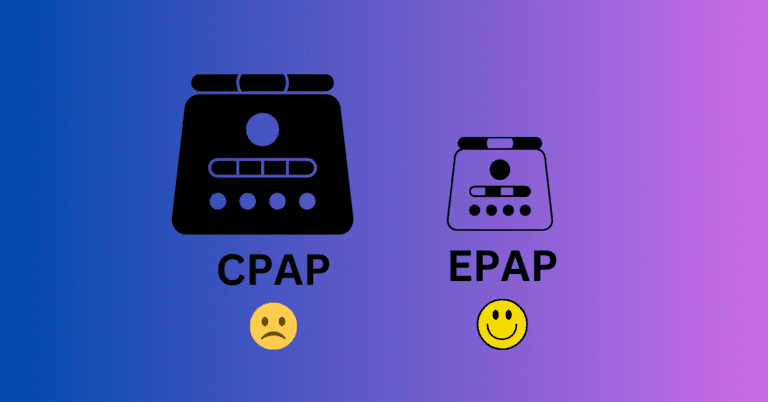Apple Watch Sleep Apnea Detection
Jeremy Smith is a long-term CPAP user and sleep apnea advocate. After being diagnosed with severe obstructive sleep apnea, he created ByJeremySmith.com to help others navigate CPAP therapy through personal stories, gear reviews, and practical advice.
As someone who has battled sleep apnea, the introduction of the sleep apnea detection feature in Apple’s latest Watch Series 10 is an exciting leap forward.
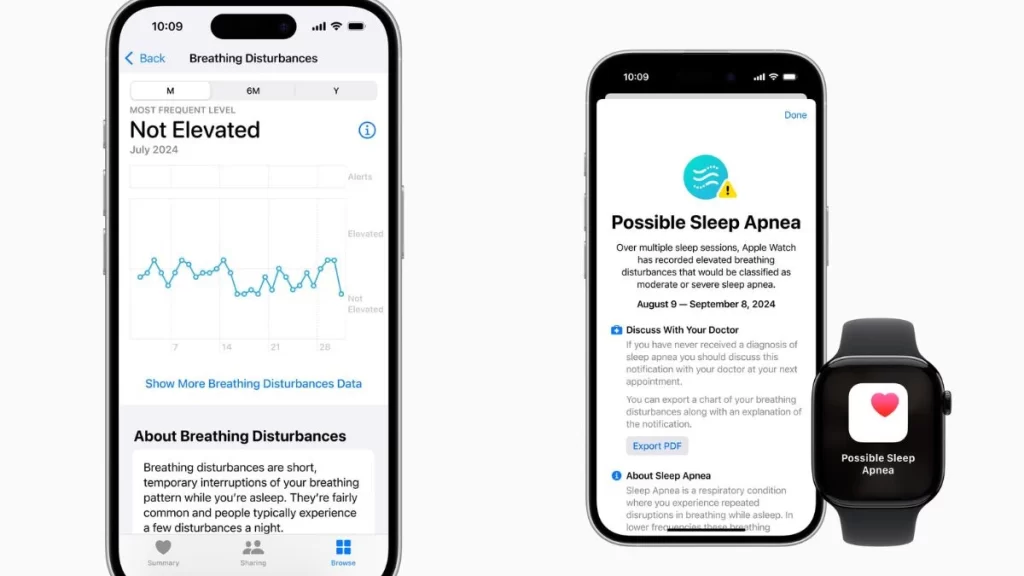
This new feature could potentially help millions of undiagnosed individuals and provide a better understanding of their sleep patterns, especially for those who suspect sleep apnea but haven’t yet undergone formal testing.
My Journey with Sleep Apnea
Before diving into the technical aspects, I want to share a bit about my personal experience. I had severe sleep apnea for years before I was officially diagnosed.

I used to wake up feeling more tired than when I went to bed, and my energy levels would dip drastically throughout the day. It took me a while to understand that something serious was happening with my sleep.
After my diagnosis, I started using a CPAP machine, which completely transformed my life. My energy improved, and the migraines I used to suffer from disappeared almost overnight.
Having experienced the life-changing effects of sleep apnea treatment firsthand, I can’t help but be excited about the latest Apple Watch features. The possibility of getting alerted to potential apnea episodes directly from your wrist is a big deal.
How the Apple Watch Detects Sleep Apnea
Detecting sleep apnea has traditionally required sleep studies, which involve equipment monitoring oxygen levels, brain waves, and other physiological data. However, Apple is taking a different approach with its new watch models.
Using the built-in accelerometer, the Watch Series 10 tracks small wrist movements that could indicate interruptions in breathing. These movements are analyzed to identify patterns consistent with sleep apnea(
This data is compiled and reviewed over 30 days to check for breathing disturbances, which is a key marker of sleep apnea. If the watch detects that you’re experiencing these disturbances frequently, it will notify you.
Apple’s goal with this feature is not just to alert users but to empower them to take the next step by seeing a doctor. The data can even be exported as a report to share with a healthcare professional.
Once you see your healthcare professional, you can also get a diagnosis in the comfort of your own home, like I did.
Why This Matters
It’s estimated that up to 80% of sleep apnea cases go undiagnosed(In my case, I probably went undiagnosed for years, not knowing the cause of my fatigue, poor concentration, and mood swings. The idea that something as simple as wearing a watch can give you an early warning is remarkable. For anyone who suspects they may have sleep apnea but is hesitant to undergo a full sleep study, this could provide the nudge they need to seek treatment.
What’s particularly impressive is that this feature was validated in a large sleep study and is expected to gain FDA approval soon.
This approval is crucial for giving users confidence in the data’s accuracy, which could lead to more proactive management of their sleep health.
Personal Reflection: The Power of Early Detection
Looking back, I wonder how much sooner I could have addressed my sleep issues if this technology had been available earlier.
The migraines that used to plague me are now gone, and my daily energy levels are significantly better since starting CPAP therapy.
Sleep apnea affects many aspects of health, including heart function, cognitive clarity, and even mental well-being. Detecting it early could prevent a lot of suffering.
The Future of Wearable Health Devices
The inclusion of sleep apnea detection in Apple’s wearable lineup marks a shift in how health monitoring is integrated into everyday technology.
Apple has managed to turn the watch into not only a fitness tracker but also a health tool that can assist in diagnosing potentially life-threatening conditions. It’s not just about counting steps anymore; it’s about taking charge of your overall well-being. I believe this feature will lead to even more developments in wearable health tech, making it easier for people to take control of their health.
Seeing devices like the Apple Watch evolve into powerful diagnostic tools reaffirms my belief in the importance of sleep health. After all, early intervention can be life-changing—and in some cases, life-saving.
Disclaimer: The content on this blog is for informational and educational purposes only and is not a substitute for professional medical advice. Always speak with your doctor or sleep specialist before starting, stopping, or changing any treatment or therapy related to sleep apnea or CPAP use.
